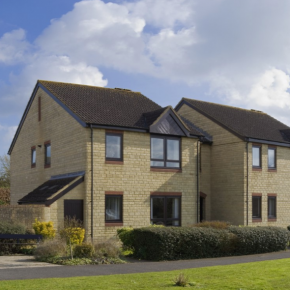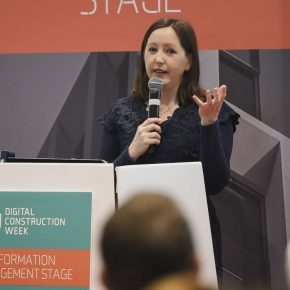
GUEST ARTICLE: Smart Social Housing – how IoT is saving the social housing sector
 This guest article sees Head of IoT and Products at Comms365, Nick Sacke, explore the ways in which IoT can be used to create smarter, safer social housing.
This guest article sees Head of IoT and Products at Comms365, Nick Sacke, explore the ways in which IoT can be used to create smarter, safer social housing.
“As the demand for more affordable social housing increases across the UK, the pressure is on for social housing associations to adapt to a dynamic, challenging landscape.
Accessibility, rising maintenance costs and tenant safety are just some of the everyday challenges facing both housing associations and their tenants. And with the rollout of smart technology taking place in allied industries, the opportunity for IoT technology in social housing can be transformative, with the potential to make developments safer, more energy-efficient, and therefore cheaper to run.
Organisations are already implementing smart technology into their offices and consumers are doing the same in their homes – and social housing associations (HA) aren’t far behind.
There are several pilot projects and proof of concept trials being rolled out by HAs, and the initial results are encouraging. However, despite common operational challenges across the sector, not one technology solution fits all scenarios.
This means that stakeholder education and a number of considerations need to be addressed in the planning phase before the work can begin.
Maintenance and resource allocation
According to Gartner, by 2020 utilities will be the largest use case of IoT endpoints, totalling 1.17 billion in 2019, and increasing 17% in 2020 to reach 1.73 billion endpoints. And the integration of smart sensors within residential properties will inevitably boost this adoption.
Smart sensors can be used to measure and gather data from a number of property management parameters including temperature, humidity, carbon dioxide levels, noise and people movement.
This data can then be shared with providers who can feed it into the network, benefiting not only tenants who can control their bills through increased controls and smartphones access, but also HAs, who can use the data insights for predictive maintenance, allowing for better and more effective resource allocation.
For example, sensors can identify whether humidity levels are creating an environment for damp and mould, which if left, would not only incur repair costs but also potentially cause health issues, leading to more expenses over time, such as insurance claims.
But this insight isn’t just limited to tenant spaces; in common areas, IoT devices can alert to incorrect parking across emergency exits and fire lanes, bin fill levels, as well as lighting loss.
In turn, this implementation enables HAs to become responsible landlords, providing overall improvements to tenants’ homes as well as to the quality of their day-to-day life.
Implementation
The greater the volume of data harvested from individual properties, the more trending and predictive analysis can be undertaken, leading to enhanced accuracy and forecasting, combined with new data visualisation techniques. And deploying the IoT programme in phases will ensure that audit trails are in place to determine areas that may require adjustment.
A key consideration in the deployment of multiple IoT devices is that they are able to utilise a common communications network infrastructure to connect and deliver data to applications in the cloud.
Standards in Low Power Wide Area Networks such as LoRaWAN and Narrowband IoT have now emerged globally, and are helping diverse device manufacturers to produce products that conform to these communications protocols, making large deployments easier to deploy and manage in large geographic areas.
This enables large scale coverage and a holistic view across estates of devices and dwellings, some of which are in the tens of thousands per HA. If these standards and methods are followed, overheads for device management and reporting can indeed be minimised.
Another important consideration, which can become a significant barrier to adoption within the social housing market, is cultural acceptance of ‘smart’ technology in the home environment.
Despite the operational and cost efficiencies of IoT, for tenants, privacy is a prime concern. The idea of 24/7 monitoring can make tenants nervous, especially when it comes to the issue of data protection; which may affect their willingness to embrace, or even approve the use of these devices in their homes.
This, therefore, is an area that HAs need to be mindful of and ensure they are addressing and exploring in the planning phase in order to pre-empt any tenant-requested adjustments to design, deployment, and use of data.
Conclusion
With the demand for more energy-efficient housing on the rise and the latest government green standard for new build homes already in place, the expectation for more intelligent homes is certainly increasing.
In light of this, we predict that in the years to follow, IoT-based property services will be much more agile, responsive and offer a dynamic set of services that are more tailored to tenants’ needs.
Properties that are better managed and highly cost-efficient to run result in happier, safer tenants. Providers are actively developing more sensors with wider-ranging capability, connectivity and deployment at scale.
The vision and objective for this type of technology intervention is to allow housing stock to connect seamlessly to facilities management and operations, exchange relevant data for insight and action, and deliver safer, smarter, economical and environmentally conscious social housing.
Latest news

30th April 2025
Digital Construction Week announces seminar programme for its landmark 10th edition
Digital Construction Week (DCW) returns to ExCeL London on 4 – 5 June 2025 with its most impactful programme yet. It brings together the best and brightest from across AECO, for two days of practical learning and idea sharing.
Posted in Articles, Building Industry Events, Building Industry News, Building Products & Structures, Building Services, Building Systems, Exhibitions and Conferences, Information Technology, news, Restoration & Refurbishment, Retrofit & Renovation, Seminars
29th April 2025
Senior pledges to ‘bee’ part of the solution with new biodiversity initiative
Senior Architectural Systems has installed its first on-site beehive, marking another step forward in its commitment to sustainability and biodiversity.
Posted in Articles, Building Industry News, Building Products & Structures, Building Services, Curtain Walling, Doors, Glass, Glazing, Innovations & New Products, news, Restoration & Refurbishment, Retrofit & Renovation, Sustainability & Energy Efficiency, Walls, Windows
29th April 2025
West Fraser range delivering key benefits for South-East carpentry company
An experienced carpenter and building site manager who has recently set up his own company is using high performance panel products from the West Fraser range.
Posted in Articles, Building Industry News, Building Products & Structures, Building Systems, Case Studies, Garden, Restoration & Refurbishment, Retrofit & Renovation, Sustainability & Energy Efficiency, Timber Buildings and Timber Products
29th April 2025
CPD Courses Available Online From Ecological Building Systems
Ecological Building Systems, a leading supplier of natural building products for sustainable construction, has revealed its comprehensive CPD programme for the year ahead.
Posted in Articles, Building Industry Events, Building Industry News, Building Products & Structures, Building Services, Continuing Professional Development (CPD's), Information Technology, Innovations & New Products, Insulation, Restoration & Refurbishment, Retrofit & Renovation, Seminars, Sustainability & Energy Efficiency, Training, Walls, Waste Management & Recycling
 Sign up:
Sign up: